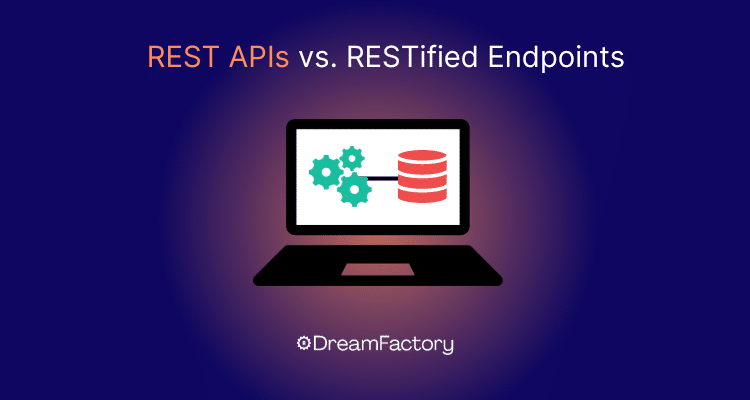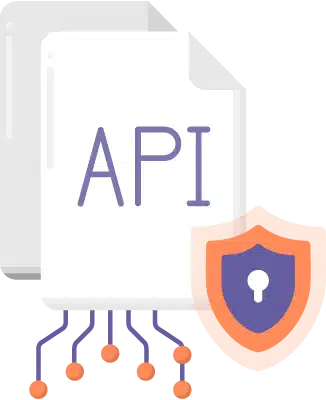REST APIs vs. RESTified Endpoints
by Spencer Nguyen • January 4, 2024

Understanding the differences between REST APIs and RESTified endpoints is crucial. REST APIs represent traditional methods of resource access, while RESTified endpoints offer a more dynamic and efficient approach, particularly in environments that necessitate rapid development and flexibility. This article aims to dissect REST APIs vs. RESTified endpoints, highlighting their key differences and determining which might be best suited for specific development scenarios.
Here are the key differences between REST APIs and RESTified endpoints:
- REST APIs often require more detailed and manual configuration compared to RESTified endpoints.
- RESTified endpoints provide more flexibility and efficiency in creating endpoints, especially when working with GraphQL.
- REST APIs offer more customization options at the cost of complexity, whereas RESTified endpoints automate much of the process.
- RESTified endpoints can be more performant and scalable, particularly in GraphQL environments.
- While RESTified endpoints bring some impressive benefits to the table, they aren't a one-size-fits-all solution and certainly can't phase out REST APIs.
Table of Contents
- What Is REST APIs?
- What Is RESTified Endpoints?
- REST APIs vs. RESTified Endpoints: Key Similarities
- REST APIs vs. RESTified Endpoints: Key Differences
- Why RESTified Endpoints Can’t Replace REST APIs
- REST APIs vs. RESTified Endpoints: Which Is Best?

Generate a full-featured, documented, and secure REST API in minutes.
Generate a full-featured, documented, and secure REST API in minutes.
What Are REST APIs?
REST APIs (Representational State Transfer APIs) are a set of protocols and standards used for building and interacting with web services. They rely on stateless communication and use HTTP methods such as GET, POST, PUT, and DELETE for data exchange. REST APIs are known for their simplicity, scalability, and flexibility, making them a popular choice for web services development.
How Do REST APIs Work?
REST APIs are all about clear communication and efficiency. They function by setting up specific endpoints - think of these as unique addresses on the web, each representing a different resource or service. Just like your home address uniquely identifies where you live, each endpoint in a REST API uniquely identifies a resource. These endpoints are versatile, responding to different HTTP methods like GET for fetching data, POST for creating new data, PUT for updating existing data, and DELETE for removing data.
What's really neat about REST APIs is their stateless protocol. Each time a client, like a web application, makes a request to the server, it's a complete package with all the necessary info. There's no need for the server to remember previous interactions. Imagine going to a coffee shop where the barista doesn't need to remember your last order to serve you; each order is a fresh start. This makes REST APIs highly efficient and reliable, as each request is self-contained and independent, ensuring smooth and effective communication between different systems in web development.
Benefits of REST APIs
REST APIs stand out for their straightforwardness and ease of use, acting like a universal language in web services with clear, established rules. They're highly scalable, allowing you to start small and expand effortlessly, thanks to their stateless nature where each request is self-contained.
This scalability is complemented by their broad compatibility, as they work seamlessly across various platforms and programming languages. This universal adaptability makes them a go-to choice for developers, ensuring efficient performance regardless of the application's growth. In essence, REST APIs are a reliable and flexible toolkit for web development, accommodating a wide range of needs with remarkable efficiency.
What Are RESTified Endpoints?
RESTified endpoints are a specific implementation within the API development sphere that allows for the quick creation of REST endpoints from GraphQL queries and mutations, without the need for extensive custom coding. They facilitate a more dynamic and automated approach to endpoint creation, offering improved performance and ease of use.
How Do RESTified Endpoints Work?
RESTified endpoints are like a smart, automated tool in the world of web development. They let developers turn any query or mutation – which are just fancy terms for the ways you ask for or change data – into a REST endpoint. Think of it like transforming a rough sketch into a detailed map with clear markers and paths. Once you define what you want from your data (that's your query or mutation), RESTified endpoints automatically set up the rest for you.
These automatically configured endpoints come ready with all the bells and whistles: query parameters (which are like specific questions you ask about your data), arguments (these are the details you provide to make your questions more specific), and permissions (rules about who can see or change the data). This is like having an assistant who not only understands what you need but also prepares everything for you, cutting down on the grunt work.
The beauty of this is in the streamlining of the development process. Gone are the days of manual, repetitive setup tasks for each endpoint. RESTified endpoints take care of the heavy lifting, allowing developers to focus on the more creative and critical aspects of building an application. It's a more efficient, less error-prone way to handle data interactions in modern web applications.
REST APIs vs. RESTified Endpoints: Key Similarities
When comparing REST APIs and RESTified endpoints, it's important to recognize the foundational similarities they share, which are integral to their function and popularity in the world of web development.
At their core, both REST APIs and RESTified endpoints are built upon HTTP protocols. This common ground means they utilize familiar HTTP methods like GET, POST, PUT, and DELETE for communication. This reliance on standard HTTP protocols makes them both accessible and widely applicable across various web services. It's akin to both systems speaking the same basic language, which ensures a level of consistency and interoperability in the web development world.
Another crucial similarity is their stateless nature. In both REST APIs and RESTified endpoints, each request from a client to a server is self-contained, carrying all the necessary information within itself. This statelessness ensures that each interaction is independent and doesn't rely on any previous interactions. It's like having a fresh conversation every time you make a request, where past exchanges don't influence the current one. This approach simplifies interactions and improves performance by eliminating the need for the server to remember or manage state, making both systems efficient and scalable.
REST APIs vs. RESTified Endpoints: Key Differences
First up, the setup. REST APIs are like a custom-build project - they require a hands-on approach to set up each endpoint. You get to tweak and tailor everything, but it does take more effort and know-how. RESTified endpoints? They're more like a smart, automated system. Much of the setup is done for you, making things quicker and easier, especially if you're not looking to dive into the nitty-gritty of configuration.
Now, let's talk about flexibility. RESTified endpoints are the more adaptable ones, especially when you're using GraphQL. They're like a Swiss Army knife, offering various tools depending on what you need at the moment. REST APIs are more like a set of specialized tools - great at what they do, but not as adaptable.
Customization is another big difference. With REST APIs, you're the master of your domain. You can customize each aspect of your API to fit your exact needs. RESTified endpoints, on the other hand, standardize a lot of this process. It's a trade-off between having total control and enjoying the ease of a standardized system.
Performance-wise, RESTified endpoints can sometimes take the lead, particularly with GraphQL, where they work more efficiently by getting exactly what you need, no more, no less. It's like having a direct flight to your destination, rather than taking multiple stopovers.
Lastly, when it comes to keeping up with modern tech like GraphQL, RESTified endpoints are a bit more in tune. They're like a tech-savvy friend who's always up-to-date with the latest gadgets and gizmos, while REST APIs are more like the reliable, classic tech you've always known.
Why RESTified Endpoints Can’t Replace REST APIs
While RESTified endpoints have been making waves for their efficiency and modern approach, it's clear they can't completely replace REST APIs. Let's break down why.
It's mainly about control and customization. REST APIs are like the trusted manual tools in your shed. They give you the freedom to build and shape your project exactly how you want it, with every little detail tailored to your specifications. RESTified endpoints, though streamlined and efficient, can't match this level of personalization. They're more like high-tech gadgets that do a lot of work for you, but with less room for custom tweaks.
There's also the aspect of legacy systems and widespread adoption. REST APIs have been around for a long time, deeply integrated into countless systems across the globe. They're the old, reliable workhorse - proven, tested, and familiar. Shifting from this established standard to something newer like RESTified endpoints isn't always feasible or practical, especially for large, complex systems that have been built and maintained over years.
Also, consider the versatility and flexibility in diverse environments. REST APIs are incredibly versatile, able to fit into a wide variety of environments and use cases. Whether it's a simple application or a complex enterprise system, REST APIs have the flexibility to adapt and serve diverse needs. RESTified endpoints, while efficient in certain scenarios, especially those involving GraphQL, don't have the same universal applicability.
While RESTified endpoints bring some impressive benefits to the table, they aren't a one-size-fits-all solution and certainly can't phase out REST APIs. The choice between them boils down to specific project requirements, existing systems, and desired levels of control and customization. REST APIs, with their proven track record, flexibility, and depth of customization, continue to hold a crucial place in the world of API development.
REST APIs vs. RESTified Endpoints: Which Is Best?
Determining which approach is best between REST APIs and RESTified endpoints depends largely on the specific needs and context of the development project. For projects requiring high customization and control, REST APIs might be more suitable. However, for those looking for efficiency, rapid development, and compatibility with modern practices like GraphQL, RESTified endpoints may be the better choice. Ultimately, the best choice is contingent upon the unique requirements and constraints of the project.

Generate a full-featured, documented, and secure REST API in minutes.
Generate a full-featured, documented, and secure REST API in minutes.
DreamFactory: The Easiest Way to Generate REST APIs
When it comes to generating REST APIs with ease and efficiency, Dreamfactory stands out as a standout solution.
Dreamfactory automates the task of creating REST APIs, turning what can often be a complex and time-consuming process into a smooth, straightforward experience. It's akin to having a magic wand that transforms your database into a fully functional API with just a few clicks. This means you can focus more on developing the core functionalities of your application rather than getting bogged down in the intricacies of API creation.
Ready to get started? Book a call with our engineers here or start your free trial!
As a seasoned content moderator with a keen eye for detail and a passion for upholding the highest standards of quality and integrity in all of their work, Spencer Nguyen brings a professional yet empathetic approach to every task.